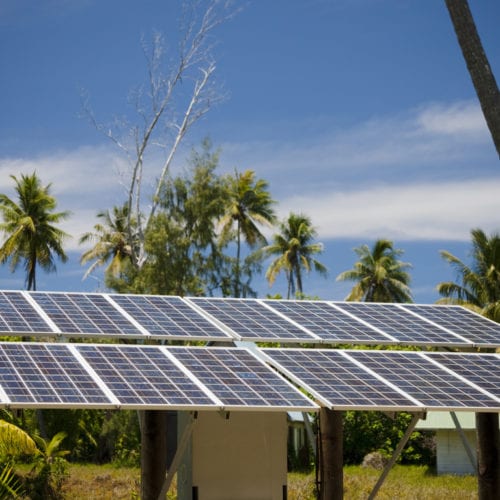
Islands

Combating Climate Change: How Islands Can Go Further Together
This blog post was adapted from a keynote presentation given at the Pacific Power Association Annual Conference and was originally posted on Virgin.com. I was in Rarotonga, the capital of the Cook Islands in the South Pacific, in 2010, after the island of Aitutaki—just a few kilometers south of…

The Puerto Rico Renewable Microgrid Toolkit: A Data-Driven Approach to Resilience
When the lights went out September 20, 2017, no one could have foreseen that it would take 130 days to restore power to seven out of ten people in Puerto Rico. Throughout the restoration process, Puerto Rico continued to experience sustained, widespread blackouts that left many in the dark for…
Collaborating for Puerto Rico’s Energy Transformation
More than a year after Hurricane Maria passed by, Puerto Rico’s energy system does not fully meet the needs of the 3.4 million American citizens who live on the island. It is also not sufficient to sustain local commerce, which is worth $105 billion of GDP annually, and which includes…

Schools Stronger than Storms
One year ago, Hurricane Maria struck Puerto Rico, causing the largest power outage in US history. Puerto Ricans, on average, suffered without electricity for three months, many for almost a year, as recovery officials struggled to repair what was already a poorly maintained and inefficient electrical grid. This prolonged power…

Part Two—Critical Facilities: Where Government and Utility Services Redefine Resilience
In the first part of this two-part series (available here), we explored how the 2017 hurricane season left thousands of homes, businesses, and critical services across the Caribbean in the dark for extended periods of time, and how little benefit backup generators bring to the region’s electrical systems. We…
